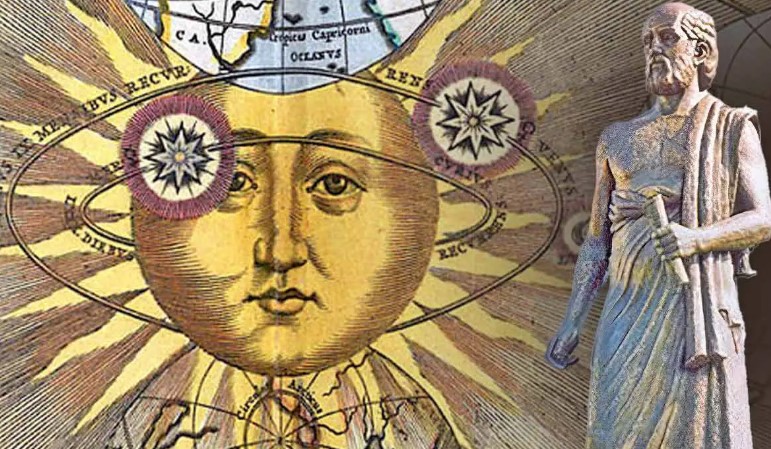
Anaximander: The Trailblazing Pre-Socratic Philosopher
Introduction to Anaximander
Anaximander of Miletus, a prominent figure in ancient Greek philosophy, is often celebrated as a trailblazer of the pre-Socratic era. Living around 610-546 BCE, Anaximander’s contributions laid the groundwork for numerous scientific and philosophical advancements. His work in cosmology, geography, biology, and metaphysics has left an indelible mark on the intellectual landscape, making him one of the pivotal thinkers of antiquity.
Early Life and Influences
Anaximander was born in the city of Miletus, a bustling hub of trade and culture in ancient Ionia, now part of modern-day Turkey. This vibrant environment exposed him to diverse ideas and knowledge, significantly shaping his intellectual pursuits. A student of Thales, another eminent pre-Socratic philosopher, Anaximander expanded upon his teacher’s ideas, moving beyond the simplistic elemental theories to develop more complex and abstract concepts.
Anaximander’s Cosmology: The Boundless Apeiron
The Concept of Apeiron
One of Anaximander’s most revolutionary ideas was the concept of the Apeiron. Unlike his predecessors who posited that the primary substance of the universe was water, air, or some other elemental form, Anaximander introduced the notion of the Apeiron, an infinite and indefinite substance that transcends the known elements. According to him, this boundless entity was the origin of all things, encompassing the entire cosmos and giving rise to the myriad forms of existence.
The Eternal Balance
Anaximander theorized that the Apeiron was not only the source of all things but also the regulator of cosmic balance. He proposed that the world operates in a state of equilibrium, with natural forces constantly interacting to maintain harmony. This idea of balance and order was foundational for later philosophical and scientific thought, influencing subsequent theories about the nature of the universe.
Anaximander’s Contributions to Geography and Cartography
Mapping the Known World
Anaximander is credited with creating one of the earliest known maps of the world. His map was a significant advancement in the field of geography, providing a more systematic and empirical representation of the earth. By using observational data and rational deductions, Anaximander’s map depicted the known world in a circular form, with the Mediterranean Sea at its center, surrounded by Europe, Asia, and Africa.
Understanding the Earth’s Shape
Anaximander also made significant strides in understanding the earth’s shape and position in the cosmos. Contrary to the prevailing belief that the earth was flat, he proposed that it was cylindrical and floated freely in space, unsupported by anything. This was a groundbreaking idea that paved the way for later astronomical models and challenged the traditional views of his time.
Biology and Evolutionary Thought
Origins of Life
Anaximander’s inquiries extended into the realm of biology, where he speculated about the origins of life. He proposed that life began in the moist elements of the earth and that the first creatures emerged from the sea. This early evolutionary thought suggested a naturalistic explanation for the diversity of life, predating Charles Darwin’s theories by millennia.
Human Evolution
In addition to his theories on the origins of life, Anaximander also pondered human evolution. He believed that humans, like other animals, originated from aquatic creatures. His assertion that human beings evolved from fish-like entities highlighted his innovative thinking and his willingness to explore radical ideas about natural history.
Anaximander’s Legacy in Philosophy and Science
Influence on Pre-Socratic Philosophy
Anaximander’s ideas significantly influenced the pre-Socratic philosophers who followed him. His introduction of the Apeiron and his theories about the cosmos provided a conceptual framework that others, such as Anaximenes and Heraclitus, built upon. His work marked a transition from mythological explanations of the world to more rational and scientific approaches.
Impact on Later Scientific Thought
The legacy of Anaximander’s work can be seen in various scientific disciplines. His early map-making efforts laid the groundwork for future cartographers and geographers. His cosmological and biological theories inspired later thinkers to explore the natural world more deeply and systematically. Even today, Anaximander’s ideas resonate in modern scientific inquiry, underscoring the timeless nature of his contributions.
Conclusion
Anaximander of Miletus stands as a monumental figure in the annals of philosophy and science. His groundbreaking ideas about the Apeiron, the structure of the cosmos, and the origins of life reflect a profound intellectual curiosity and a pioneering spirit. Anaximander’s legacy continues to influence contemporary thought, demonstrating the enduring relevance of his insights and the breadth of his vision. As we delve into the rich tapestry of his work, we gain a deeper appreciation for the foundations of our own scientific and philosophical traditions.



